Week 9 - Characteristics of Living Things
| Site: | MoodleHUB.ca 🍁 |
| Course: | Science 8 LearnNet |
| Book: | Week 9 - Characteristics of Living Things |
| Printed by: | Guest user |
| Date: | Monday, 17 November 2025, 5:42 PM |
Description
Week 9 - Characteristics of Living Things
1. Introduction - What is Living?
No Textbook Readings for this lesson
Introduction
The universe is a marvelous place that is filled with stars, galaxies and even collections of galaxies called super-clusters. But through all our investigations of the our own solar system and the milky way galaxy we have yet to find any other signs of life out there. Many astronomers and exobiologists and organizations like SETI and NASA are looking for extraterrestrial life. But how does one define life and what kind of living things might we expect to find out there?
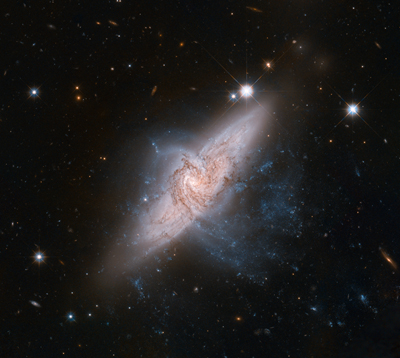
Is there life out there?
But we don't have to search into deep space to find strange life forms. Many scientists believe that we know more about space than we do of the Earth's deep oceans. Come along as we explore some of the strangest living creatures ever seen.
Check out this PBS site and examine creatures like 'fang tooth' and 'viper fish'. Some creatures even make their own light in a world where there is no light . This is called bioluminescence . In this module we will be exploring some of the concepts we have about life. Like all investigations in science we will start off with some questions to focus our investigations.
- What defines something as living?
- Do all living organisms have things in common?
- There are about 1.75 million species on Earth. How do we make sense of the vast diversity of living things we find on this planet?
- What variations in structure and function can found in living things?
- Finally, and more personally, how does our body work?
Lesson 1
 |
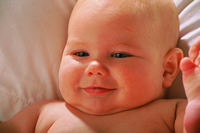 |
"I think therefore I am"
Rene' Descartes (1596-1650). The father of modern philosophy. |
The computer can perform more complex mental tasks then the baby and yet we know that the baby is alive and not the computer. Obviously there is more to being alive then simply thinking.
Background Information
All living things :
- are made of cells
- grow and develop
- need energy
- respond to their environment
- reproduce
- adapt to their environment
|
|
|
© 2002 Alberta Online Consortium
|
2. What are Living Systems?
Lesson 2
No Textbook
Readings
for this lesson
What is a system?
A system is simply a group of parts working together. Both a city and a human are systems because they are both composed of smaller systems which perform certain functions.
|
Subsystems of the City
|
Function of the subsystem
|
Similar Subsystems in Human
|
|
City Hall
 |
coordinates all the other systems
|
Brain
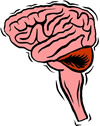 |
Transportation system
 |
transports substances around the system |
Heart and Blood
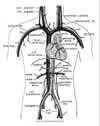 |
|
Power Plant
 |
converts energy into a form useable by the system
|
Digestive System
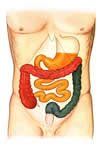 |
|
Waste Management System
 |
removes waste from the system
|
Kidneys and Bladder
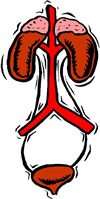 |
|
|
|
© 2002 Alberta Online Consortium
|
3. Structure and Function
Lesson 3
No Textbook
Readings
for this lesson
Background Information All living organisms are systems composed of subsystems (lesson 2). All living organisms need to carry out the same basic life functions (lesson 1). However each type of plant or animal has a different system for caring out these life functions depending on their environment and surroundings. These different systems are called adaptations. For example: movement The following are all systems developed by animals to move around in their environment.
|
Adaptation for movement
|
Image
|
Explanation
|
|
Humans have 2 legs for walking
|
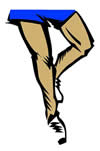 |
One theory as to why humans walk on two legs is that they have a strong need to communicate. It is easier to communicate with each other while standing on two legs. |
|
Dogs, cats (and others) have 4 legs
|
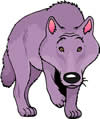 |
Four legs lets animals move faster when hunting or chasing prey (or running away). |
|
Fish have fins for swimming
|
 |
The narrow flat design of fins helps push the fish through the water. |
|
Birds have wings for flying
|
 |
Birds wings are light, strong and aerodynamic for moving through the air. |
|
Check Your Understanding The Background Information of Lesson 3 provided a chart with the adaptations that these creatures have for movement. A similar chart follows. Consider the 5 different living organisms below (plants, animals or insects) and identify how they have adapted for gathering food. Use the Internet to search for pictures and information.
|
4. Cells and the Microscope
Lesson 4
Science in Action 8
Pages 98-102, 439-440
ScienceFocus 8
Pages 103-106, 111-114
Background Information
Cell Theory
Today, most scientists accept the cell theory. The major ideas of the cell theory are:
- All living things are made of one or more cells.
- Cells are the basic units of structure and function in living things.
- All cells come from other cells.
However, what are cells? Let's begin to answer this question by looking at how cells were discovered. The following is a timeline indicating some of the people and events in the development of the cell theory.
Timeline
1665 Robert Hooke looked at thin slices of cork under a microscope. Hooke stated that the cork was similar to a honeycomb with lots of empty spaces. He used the word "cells" to describe the cavities in the cork because they reminded him of the small rooms, called cells, found in monasteries. Today, scientists know that Hooke was not looking at a living cell. He was, however, observing the walls of cells that were alive at one time.
1680 Anton van Leeuwenhoek was the first to examine a drop of pond water under the microscope and observed several microorganisms that he called "beasties."
1824 Henri Dutrochet was the first to describe the cell as the truly fundamental part of the living organism.
1833 Robert Brown discovered and named the central part of the cell. He called it the nucleus.
1838 Matthias Schleiden determined that all plants are made up of cells.
1839 Theodor Schwann determined that all animals are made up of cells.
1859 Rudolf Virchow concluded that all plant and animal cells arise for other living cells.
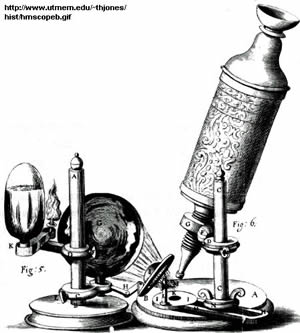
The work of these and many other scientists lead to the development of the cell theory. A theory is an attempt to explain a set of observations. The surest way to test a theory is to use it as the basis of a prediction and then check it by experimentation. An important effect of a theory is to spur scientists to search for new data. When new data are found, the theory is reexamined. If the new data do not support the theory, then the theory must be revised or discarded. In science, a theory is never proved once and for all. The theory, however, does account for new evidence that arises. The development of the cell theory could not have occurred without the invention and improvement of the technology called the microscope . The microscope allowed biologists (scientists who study living things) to study organisms in greater detail than ever before.
6. Unit 2 Section 1 Quiz
You will have two opportunities to write this section quiz. This quiz consists of 10 questions. Use the results from your 1st attempt to help you prepare for your second attempt. Your best score will be taken as your assessment mark. You have 15 minutes to complete this multiple choice quiz.
